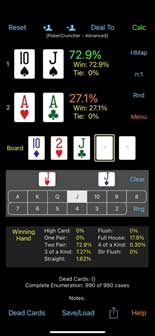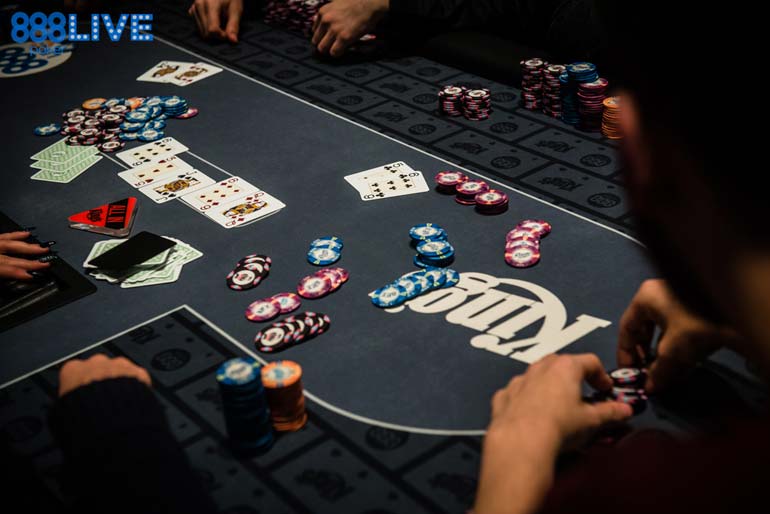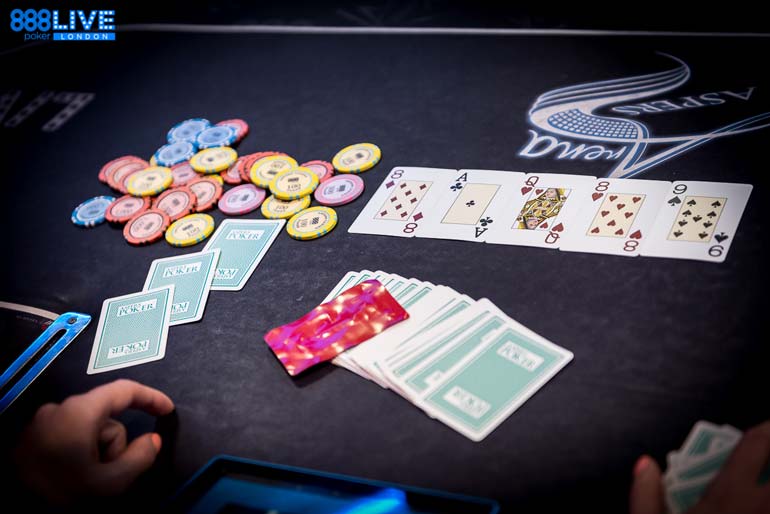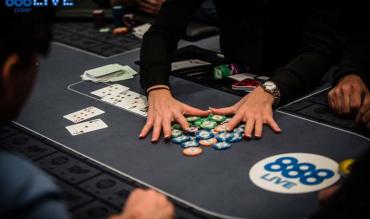Raise your hand if you’ve ever flopped Two Pair and lost to a bigger Two Pair!
See all the hands going up? And when it happens, you often lose a big pot, especially on a dry board. Your negative implied odds are even worse when you hit your boat. Bottom pair turns into a weak boat, and you can lose your stack to a bigger full house.
Another big problem occurs when the card you do not hold pairs on the turn or river. Now you are reduced to one pair not on the board and possibly a weak kicker.
That card counterfeits your Two Pair.
And remember this very crucial point:
| You may have had a beautiful hand on the flop. But once you’ve been counterfeited, forget about your strong hand. It may be garbage. Don’t fall into the trap of being in love with your hand and thinking you’re going to win. It’s over! Move on. Let it go! |
It’s so tough to realise that you are no longer in good shape. You might be tempted to call a bet because you feel entitled to the pot. It’s like when you raise pre-flop with kings, and an ace flops.
You need to get over the excitement you felt pre-flop and deal with the current situation.
Now, let’s get into how to play this challenging hand in Texas Hold’em.
Table of Contents
Flopping Bottom Two
We’ve all been there.
You get a free look at the flop four-handed in the big blind with a junk hand like the following -

And the flop comes -

Woo-Hoo! We’ve flopped Two Pair.
While this might look like a great situation, it can be relatively dangerous. I’ve had some pretty lousy luck lately after flopping Two Pair. So, I think this hand deserves some careful analysis.
The first thing to note is that we have bottom two. There is a world of difference between top two and bottom two. With bottom two, our hand is vulnerable. I like to bet big in that situation to protect my hand.
Let’s ignore paired boards, flushed flops and flopped straights. Unless my opponent flopped a bigger Two Pair or a set, I am very likely ahead.
Depending on the flop, a bigger Two Pair can be more or less likely. We don’t expect to be up against Q3 very often. But we have to start considering Q9 if we encounter a lot of resistance or a re-raise.
Top two only needs to worry about sets or big combo draws.
Flopping Bottom Two vs Top Two
Compare flopping bottom two versus top two on the following flops -

Versus

Consider the first of these flops., Despite flopping bottom two, it is pretty unlikely that you are up against a bigger Two Pair or a straight draw. Unless your opponent flopped a set, you are likely way ahead.
If your opponent flopped a king, you’re probably going to win a nice pot.
But, on the second flop, you should not be too excited if you hit bottom two. There are many possibilities for a bigger Two Pair since those likely are cards that your opponents hold.
Also, a possible straight already got there. And an ace, a jack or a king on a later street would be scary.
Thus, we have to consider the board texture when we flop Two Pair as well. The same is true if we have top two, bottom two, or something in the middle.
Flopping Bottom Two vs Overpair
Another problem occurs when you have Two Pair, and you are up against an opponents’ overpair.
For example, say you have -

And your opponent has –

And the flop comes -

Now, according to poker cruncher, you are 73% to win the hand by the river.

Your opponent has five outs. The problem is that you have a very strong hand. So, a two or an ace are not likely to scare you too much. You can also lose the hand if the turn and the river are the same card (unless they are a T or J, of course!).
So, your negative implied odds are huge. Your risk is even more pronounced if you have a crazy Two Pair like sixes and sevens. There are many more overpairs to your Two Pair, which can counterfeit you.
Absolute/Relative Strength of Two Pair Hands
 Absolute/Relative Strength of Two Pair Hands
Absolute/Relative Strength of Two Pair Hands
With Two Pair, or any hand for that matter, it is useful to think in terms of relative strength and absolute strength of a hand.
- In absolute terms, Two Pair on the flop is a strong hand. It is better than most hands you will have after the flop.
- But say the board is flushing, and you face action when the third of the suit arrives. You need to realize that the relative strength of your hand is now weak.
You have to consider the board and your opponents and proceed with caution.
Odds of Flopping Two Pair
The odds of flopping Two Pair when starting with an unpaired hand are 2%. That means you should expect about one in fifty hands to flop Two Pair.
- In a live game, that’s approximately once every two hours, assuming an average of 25 hands per hour.
- Online, with about 60 hands per hour at a full table, you should expect to flop Two Pair slightly more than once an hour.
Now let’s assume that, on average, four people see a flop at your table on every hand. We’ll ignore the fact that some of the time, players will have starting pairs.
- In that scenario, you expect that someone will flop Two Pair after starting with unpaired hands about every 15 minutes in a live game.
- This number will be about every five minutes in an online game.
Top two should be more common than bottom two, with higher cards in the mix more often than low cards.
Two Pair – Basic Strategy
When you are lucky enough to flop it, the key to playing Two Pair is to be very aware of implied odds.
If stacks are short, you probably want to figure out how to get it all-in as quickly as possible.
But say you’re in a tournament, near the bubble, Three Broadway cards, three suited cards, or a pair flops, and you hit the other Two Pair. You should tread very carefully.
Be cautious if you boat up after flopping bottom two.
If stacks are deep, then flopping Two Pair is very dangerous. The difference between top two and bottom two is much more pronounced with deepstacks.
You may need to fold bottom two in the following scenarios –
- If the board becomes too coordinated
- If you get counterfeited
- If your opponent appears ready to play for full stacks in the hand
 If the turn and/or river pair the board
If the turn and/or river pair the board
Two Pair - The Bottom Line
So, what do we make of all this? Flopping Two Pair is usually desirable. But remember not to fall in love with your hand in the following situations –
- If the turn and/or river pair the board
- If the turn and/or river bring in some strong draws
- If stacks are deep
You’ll know you’re playing strong poker when you can lay down Two Pair knowing that you’re probably beat.
There are times when that is undoubtedly the right play, even if it is a bit painful.
One final word. You will find that the loosest opponents flop Two Pair much more frequently than tighter players. Take that into account if a loose-passive player suddenly starts betting hard.
Don’t assume they couldn’t hit Two Pair on that particular flop. They can, and they will, and they’ll gloat.
But you’ll win their money in the long run because you’re a better player than they are!


